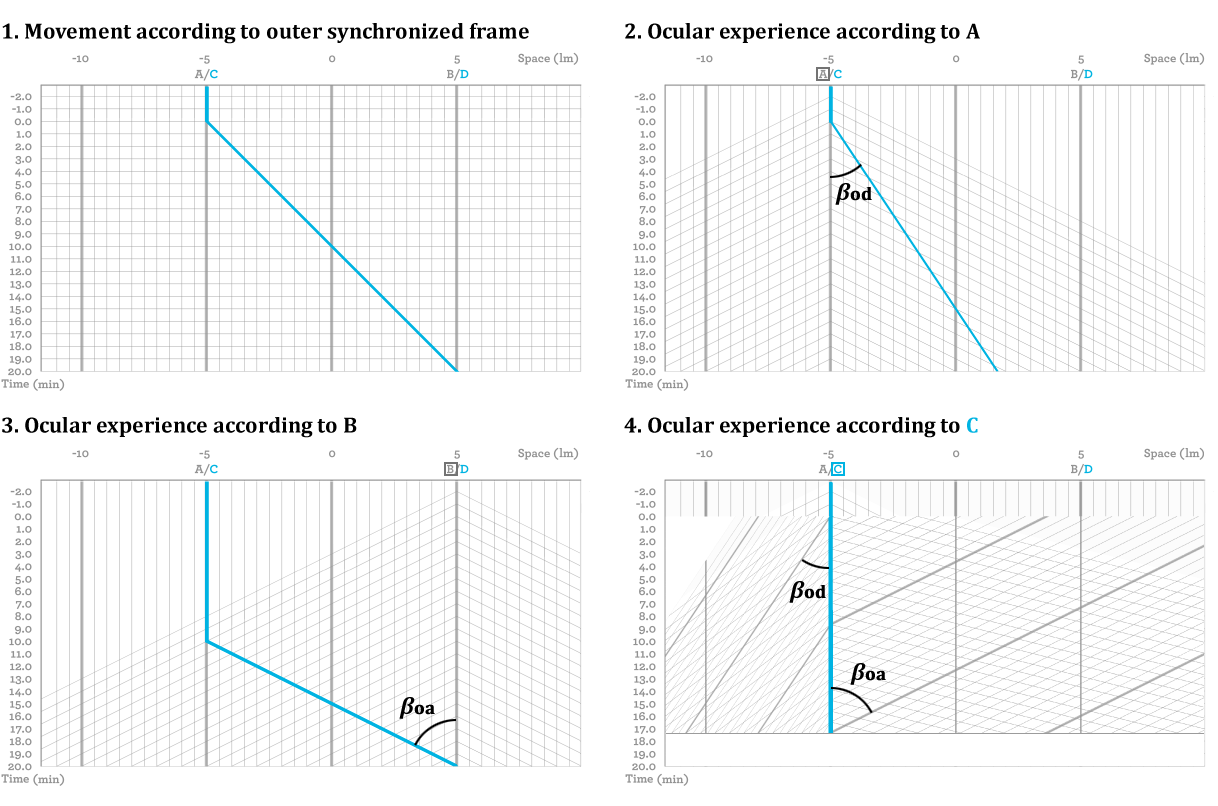3.2 Time dilation
Space is equivalent to a time filter. If a compound moves through the time filter of another frame of reference, it should lead to differences in the perceived time between different compounds. The MRM is very clear that time dilation requires an asymmetric acceleration followed by the progression of events. Time dilation is not an artifact attributable only to velocity.
3.2.1 Identification
Two planets are located at a distance of 10 light-minutes from one another. We are moving from planet A to planet B at 0.5c according to the planets' frame of reference, meaning that the planets will measure the duration of our trip to be 20 minutes.

By plotting one-dimensional movement in simulation charts, it is possible to illustrate how time dilation ensures mutual ocular velocity.
-
Chart 1 shows the movement as measured in the planets' synchronized frame of reference.
-
Chart 2 shows the ocular experience according to planet A when the spatial delay is applied. Object C appears to move away at βod=0.33. We can use an angle to represent this ocular departing velocity.
-
In chart 3, we do the same as in Chart 2 for planet B. We can see that object C approaches at βoa=1. We use an angle to represent this ocular approaching velocity.
-
In chart 4, we see the events from object C's point of view. At t=0, we apply the IGS for β=0.5. We can see that we must compress the entire time line to make the angles cohere. This solution is the only way to make the ocular velocities entirely mutual.
We can ask ourselves how the moving object can become time dilated when movement is always relative. Is there a preferred frame of reference? No, but time dilation depends on who is performing the asymmetric action of accelerating. This is described further in 3.4 Mutual measurable relativistic effects.
